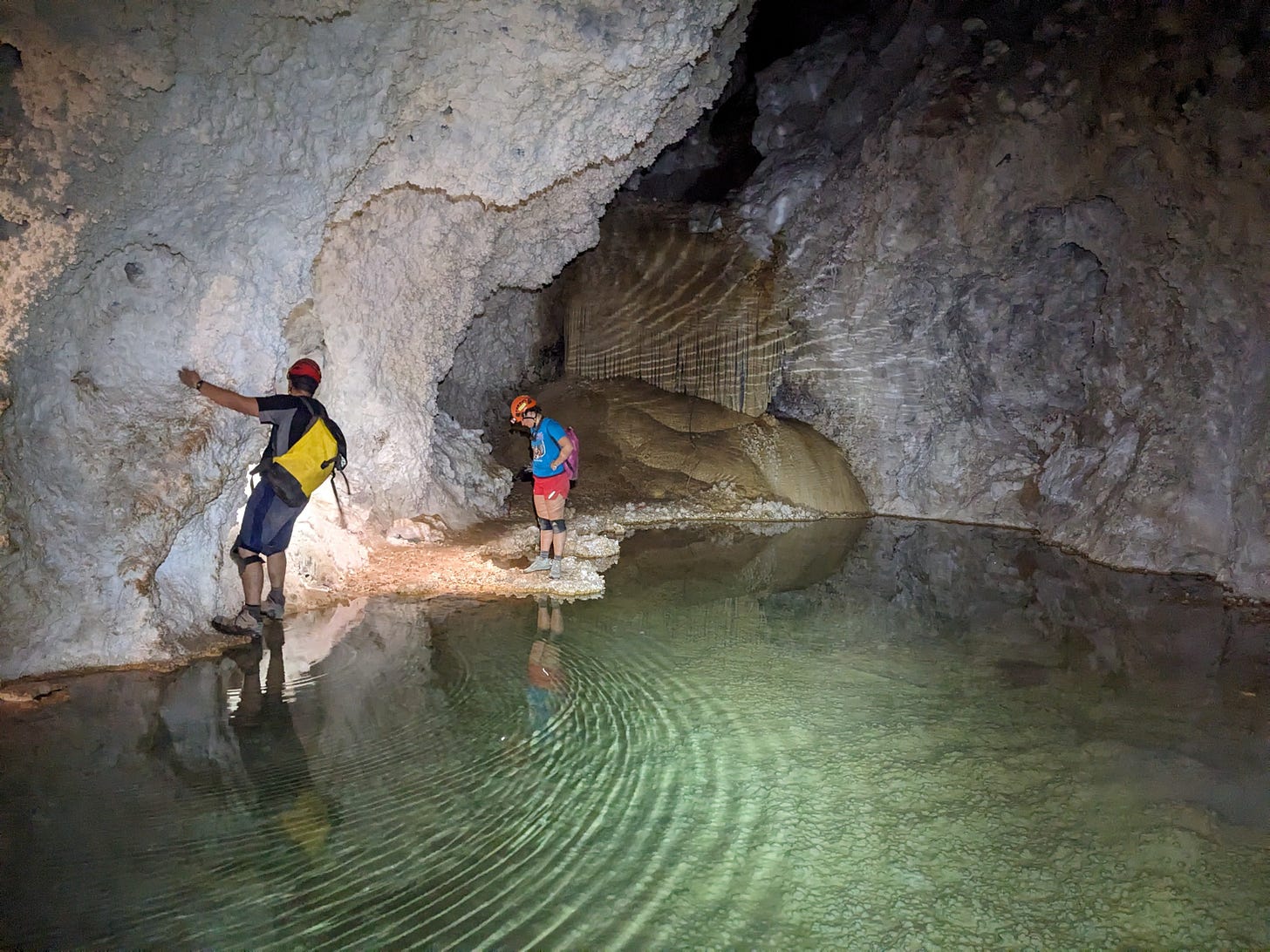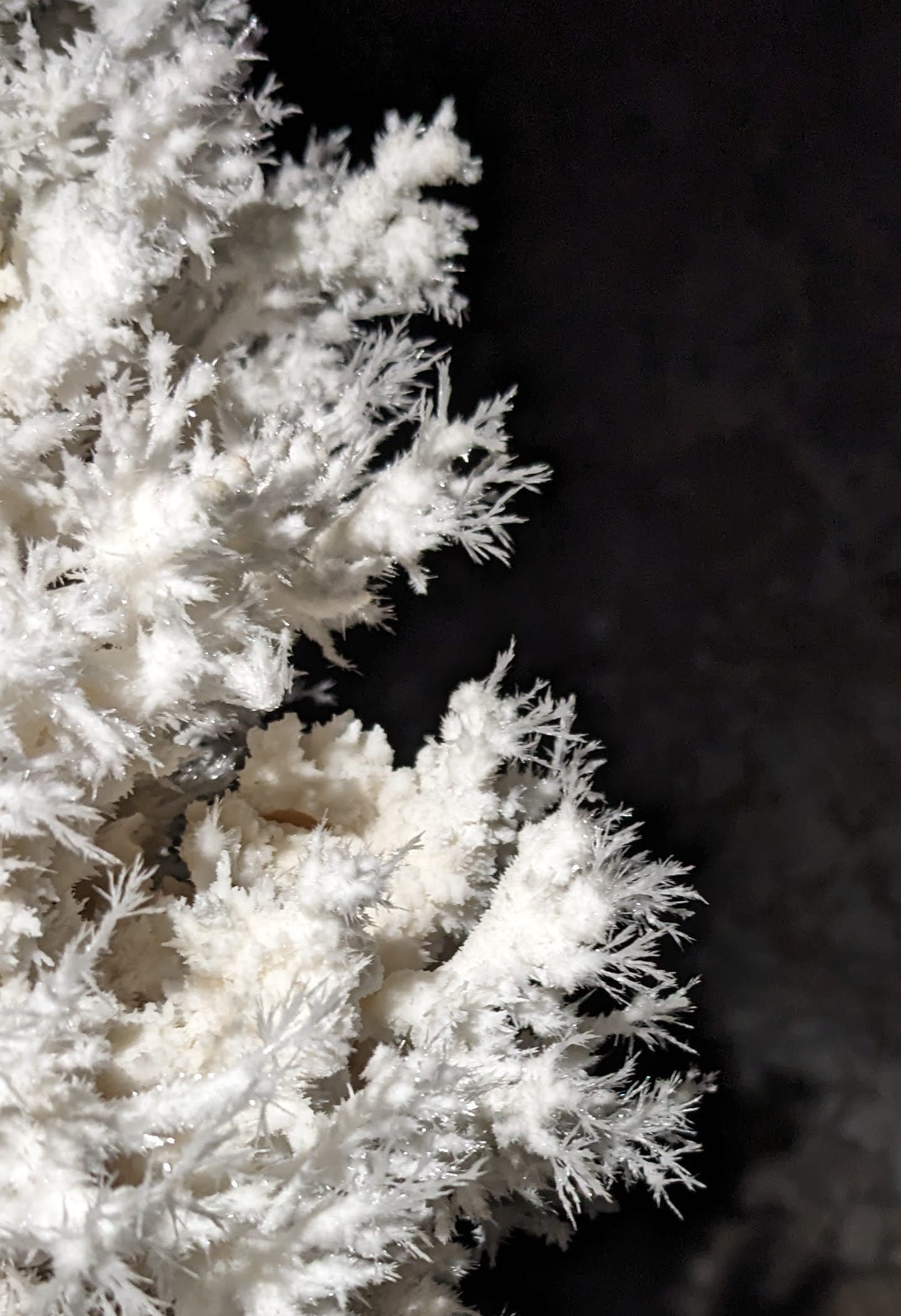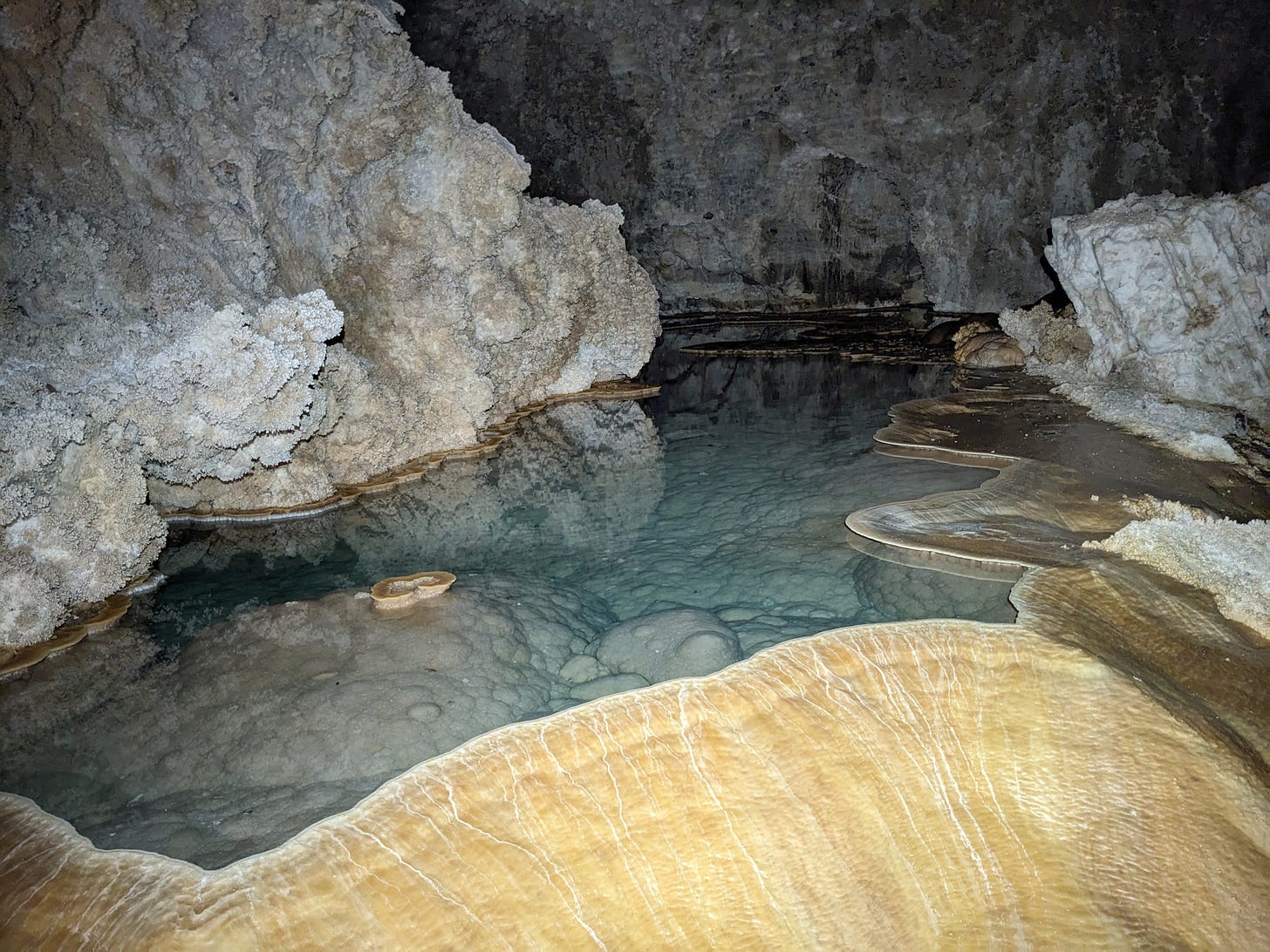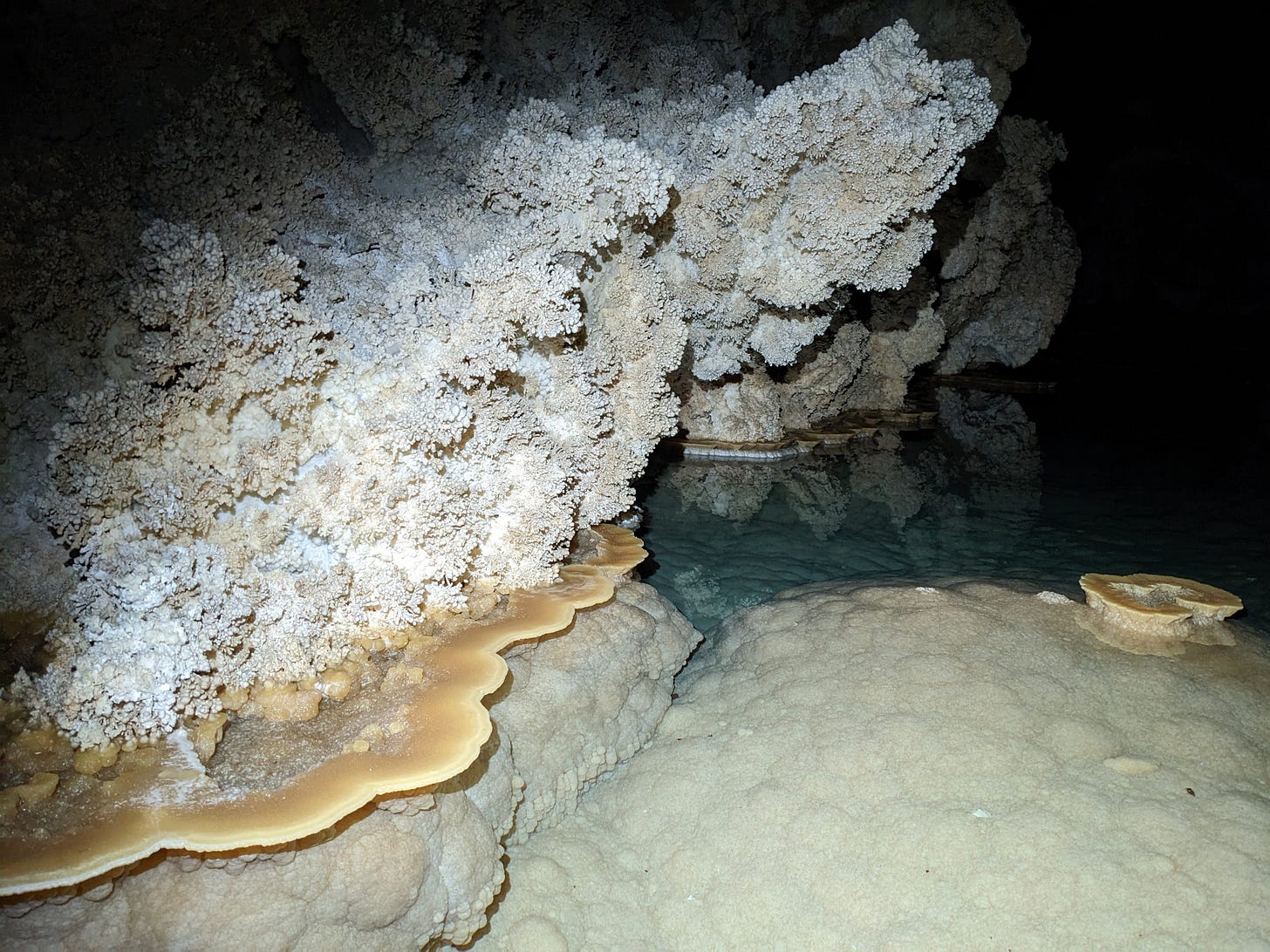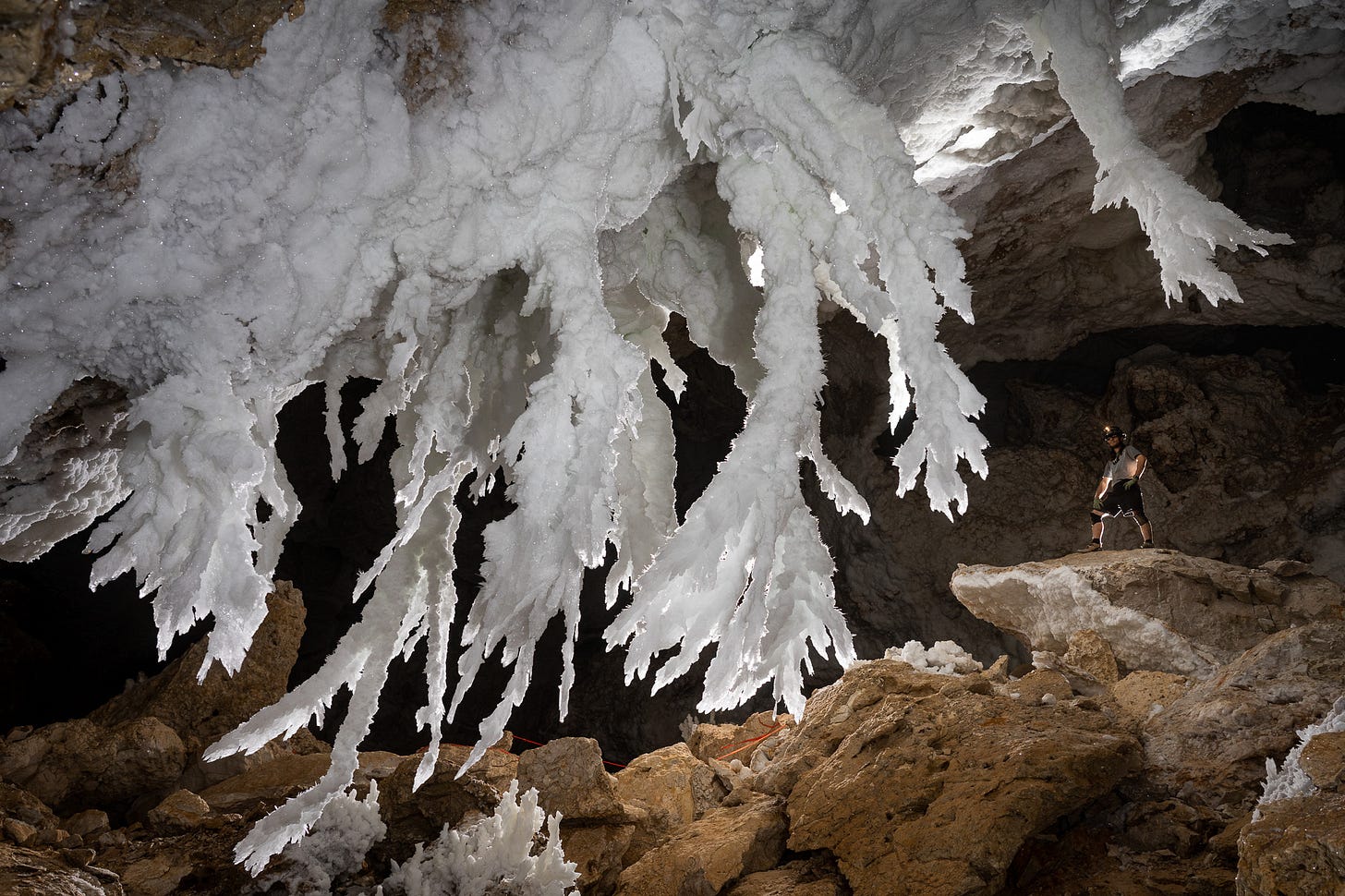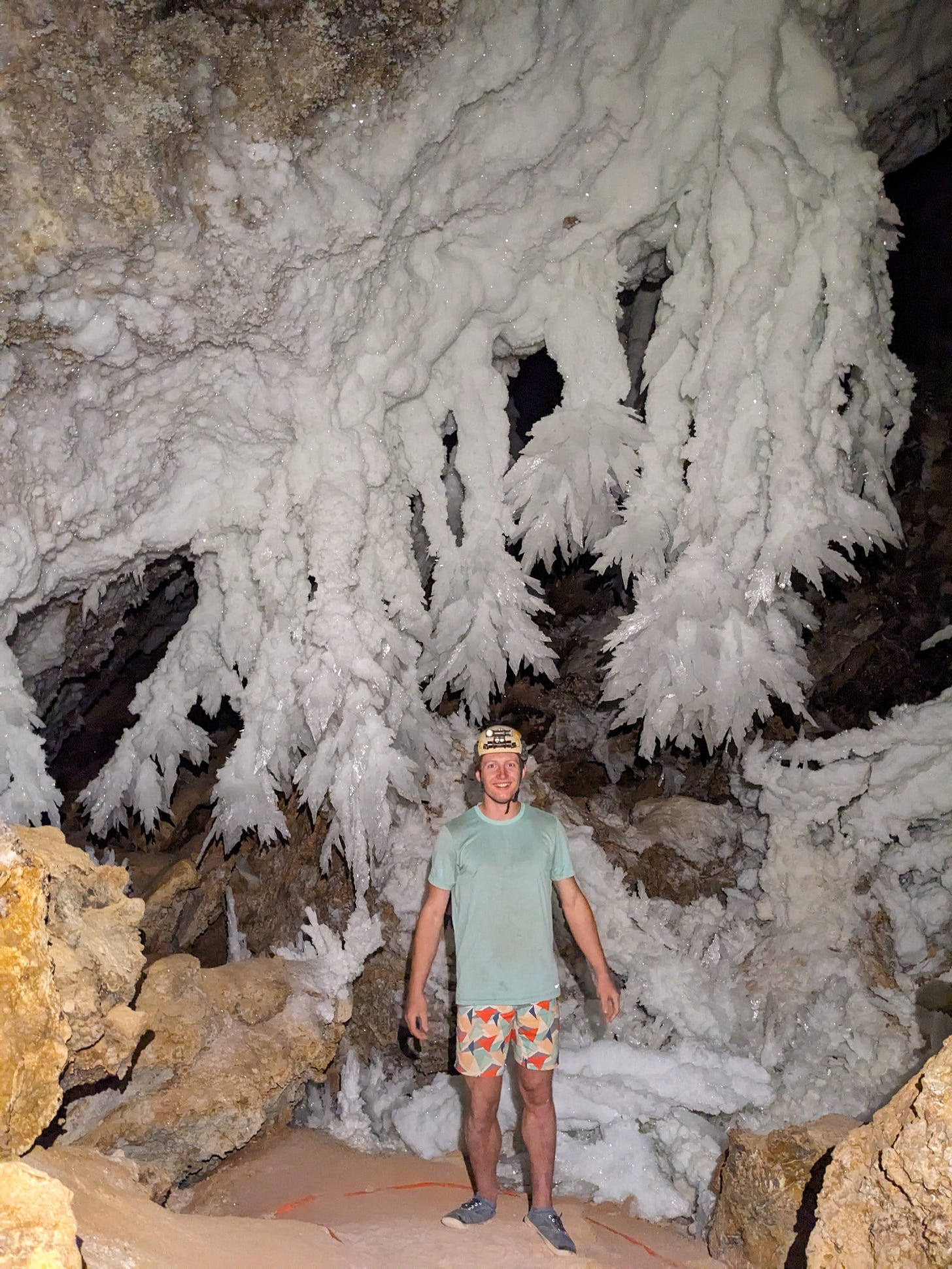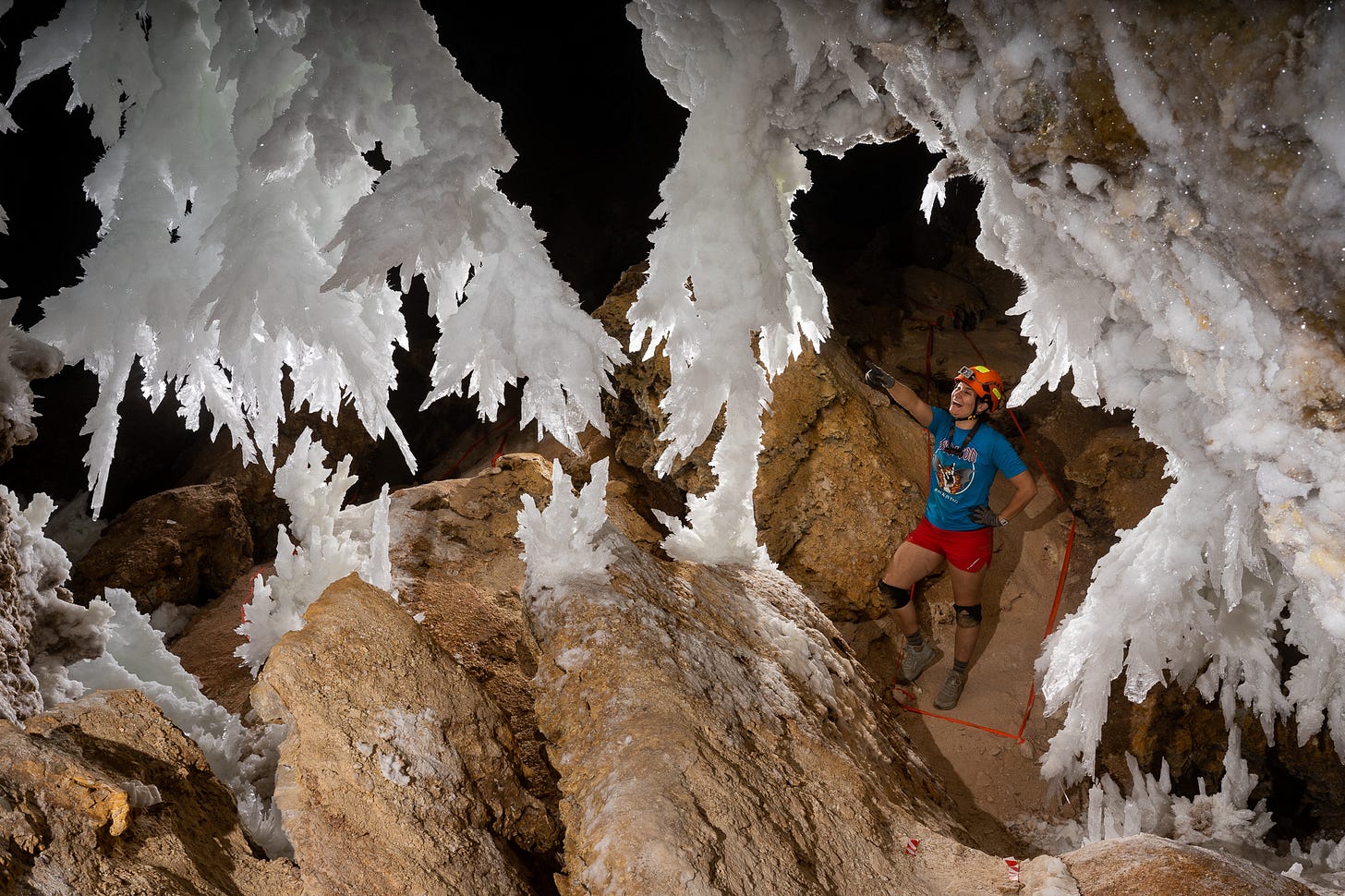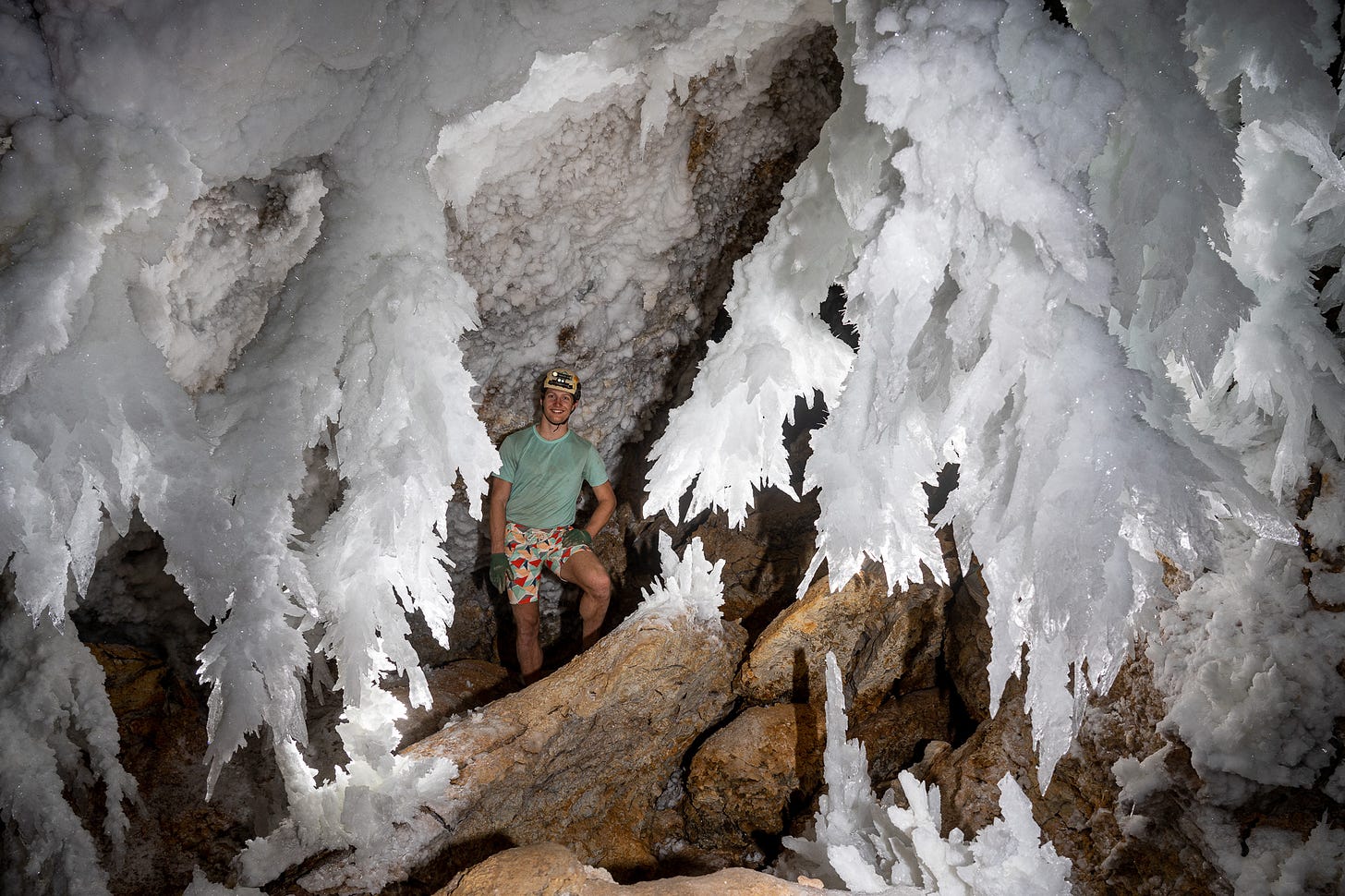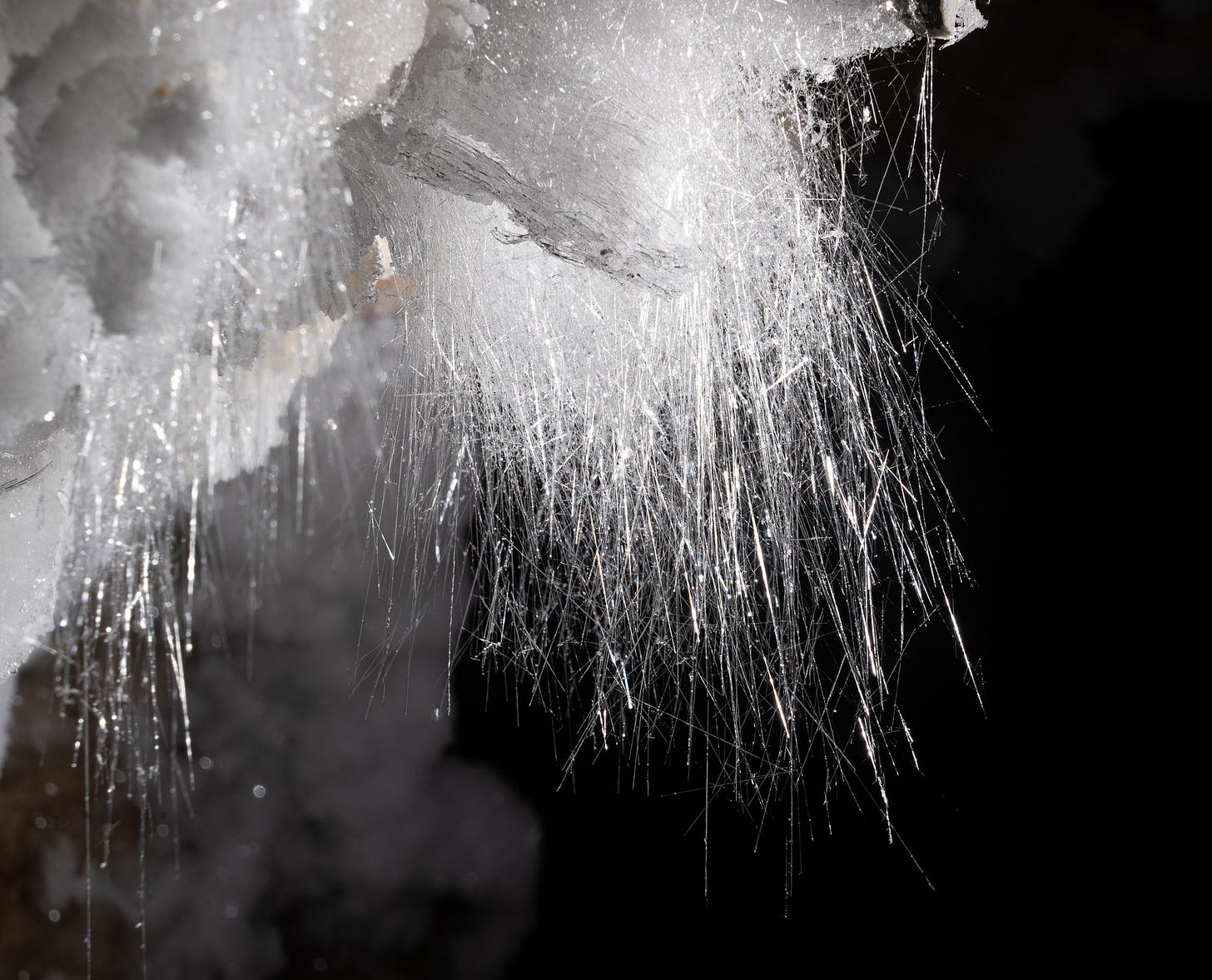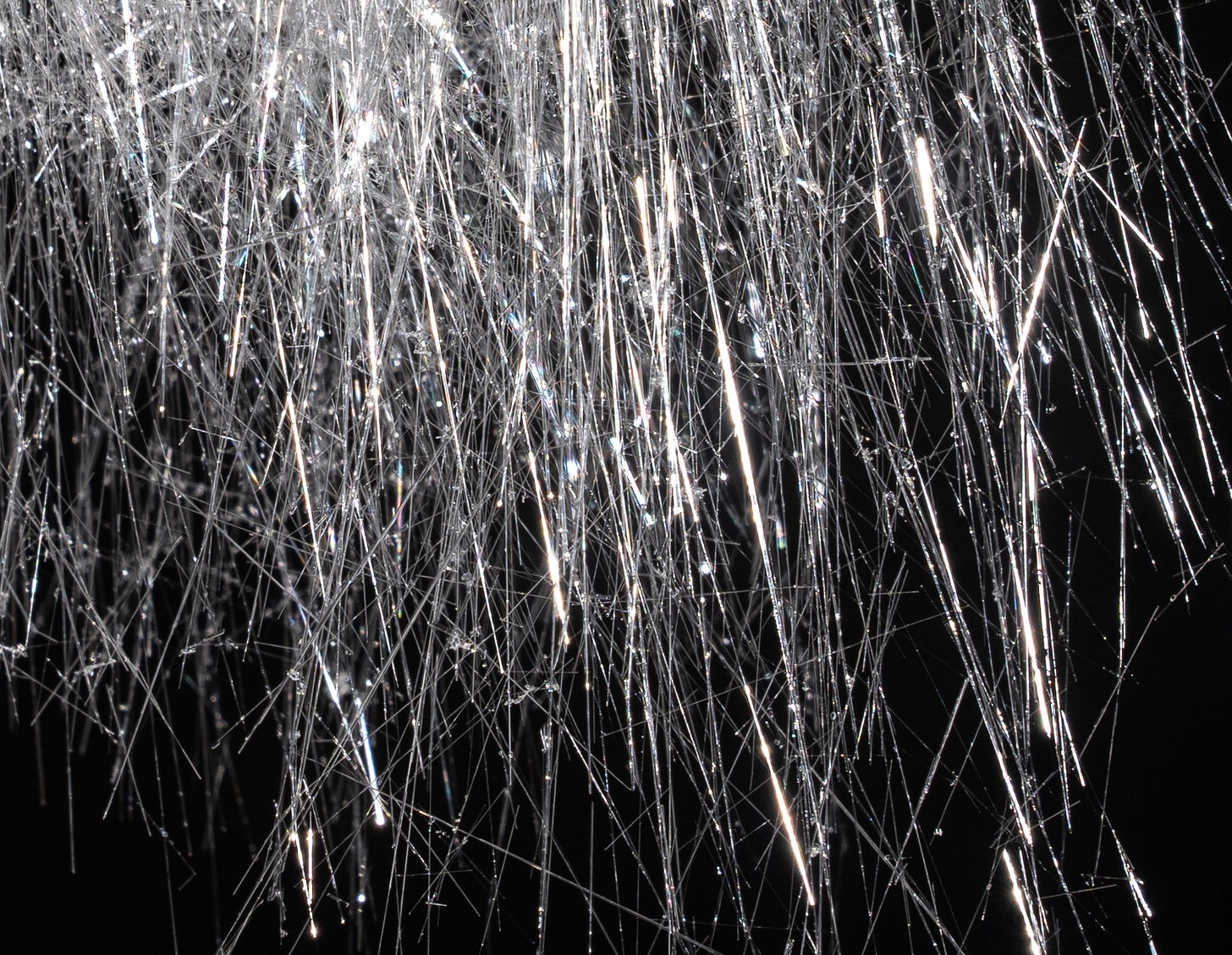The Chandelier Ballroom in Lechuguilla Cave
Planet Earth isn't supposed to look like this.
This past Saturday, I went to Lechuguilla Cave in southern New Mexico. Lechuguilla is in Carlsbad Caverns National Park, but it is not connected to nor part of Carlsbad Caverns. It is an entirely separate cave, longer, deeper, and in many ways more spectacular than the Caverns. There are no paved trails, electric lights, nor elevators; you access the cave by hiking into the desert backcountry off the beaten trail in the park, then rappelling into the entrance pit that leads to countless more rope drops and 150+ miles of mazy passage that sprawls underneath the hills in the park.
I had been to Lechuguilla Cave once before, last Memorial Day weekend. That was a three day camp trip at the Deep Seas Camp where we hauled in a bunch of rope to replace the ropes on the deepest pit series in the cave. The trip this past weekend was just a day trip, and our objectives were similar albeit smaller: replace another portion of fixed rope that had been left rigged in the cave for an unknown number of decades, and flag a trail through one of the more delicate, unique areas of the cave, where some trips are upcoming and the park wants impact minimized.
So this trip wasn’t an exploration trip per se, but we did see some of the most spectacular areas of one of the most visually stunning caves anywhere in the world, and we got some great pictures, so I wanted to share. Enjoy the pictures. These kinds of caves certainly make me think “this is fake, this doesn’t happen naturally on planet Earth; aliens and/or CGI must be involved”. Maybe the pictures will make you think the same! Feel free to scroll down to the pretty pictures and skip my extended monologue if you want.
Our day started out well, as we did the hike to the cave under clouds and with cool temps. Usually early September still feels like summer in Carlsbad, but the clouds and breeze made the hike to the cave pleasant. We even got lightly rained on during the approach. The cave is extremely hot at 68 degrees Fahrenheit and 100% humidity, so we welcomed the reprieve from the New Mexico summer heat while we awaited the cave heat.
We entered the cave at 10:45am. Our team was Hunter Klein, Georgia Schneider, and Clancy Montemayor. Hunter is the Park Service employee who ran the trip and is organizing the effort to replace all the aging ropes rigged in the cave. On the way in, I dropped off a rope I was carrying at The Rift, a large fissure complex about 45 minutes into the cave. The main travel route continues right/south, but we were to use that rope to replace an old one going left/north, off the main travel route into the rest of the cave.
It took us just over an hour to make it to EF Junction, the first major junction in the cave where multiple travel routes to important parts of the cave branch off in different directions. That was a fast time, compared to our last trip at least. Despite that, I was still plenty cool and wasn’t burning through my water.
From EF Junction, we took the right branch, instead of the left branch we took last time that leads to the Great White Way and to the Deep Seas Camp. From this point on every part of the cave I experienced was totally new to me. The passage going right from EF Junction was pleasant walking passage coated in sparkly gypsum. It continued as easy walking for about 10 minutes until it ended at the first rope obstacle: the Little White Bastard. This small, low-angle, tubular rope drop is a lesser version of the Great White Way, which is the first rope you encounter if you go left at EF Junction instead of right.
The Little White Bastard led to some more walking passage at the bottom, then some more rope drops and traverses. The shoestring traverse, the last rope traverse before Lake Lebarge, was particularly fun and sporting. After the shoestring traverse, two more down ropes led to the spot where we could ditch our vertical gear for the rest of the trip in. It was also the first spot this trip where I was truly blown away by the cave’s grandeur: Lake Lebarge.
Alright, now for the good stuff
You made it this far, so now you get to see some pretty pictures.
Lake Lebarge is really a complex of multiple lakes that feed into each other. The first major lake presents a unique obstacle: it stretches from wall to wall, and you have to carefully step along shelfstone ledges at the edge of the lake to avoid the water, lest you get your feet wet or contaminate the pristine pool that lies undisturbed hundreds of feet below the Earth’s surface. We all carefully sidestepped along the edge of the pool, holding on to the grippy popcorn-covered formations on the wall to avoid falling in the water.
When our heels did briefly touch the water and disturb it, the ripples that propagated along the pool reflected a beautiful wave pattern on the ceiling above the water. We got our own little laser light show for entertainment while waiting for others to cross the pool.
When this first massive lake ends, the path takes you into a garden of boulders covered in pearly white aragonite bushes. Here you have to be very careful not to touch anything as you weave in between the boulders, lest you break one of these delicate formations.
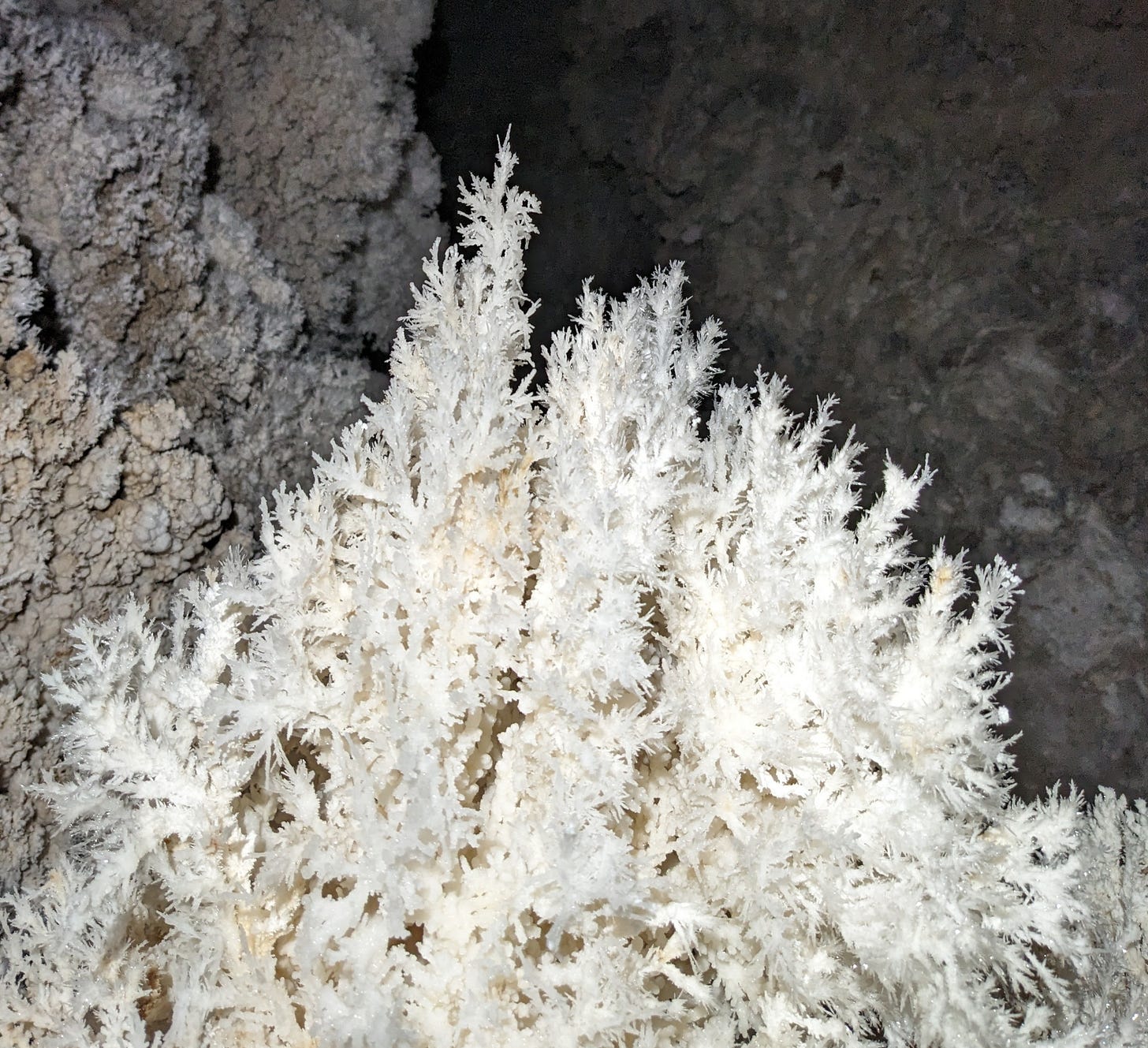
Just past this first major lake is the lake we collect water from. The path doesn’t go right next to this lake, and there’s no accidentally stepping in it and contaminating it, so we drink this water untreated. I still hadn’t drank any of the three liters of water I had hauled in, at two and a half hours into the cave, so I was a little disappointed that I didn’t have the chance to fill up a bottle full of pristine Lake Lebarge water. I at least had a sip from someone else’s bottle, to sample the goods.
There’s one last major lake in the Lake Lebarge complex. At the edge of this lake, the flowstone slope that the water follows begins to descend steeply into the passage, and we get off the flowstone slope and onto a higher ledge of what becomes a massive round borehole that extends straight into blackness as far as you can see. This aesthetic tubular passage is the Lebarge Borehole.
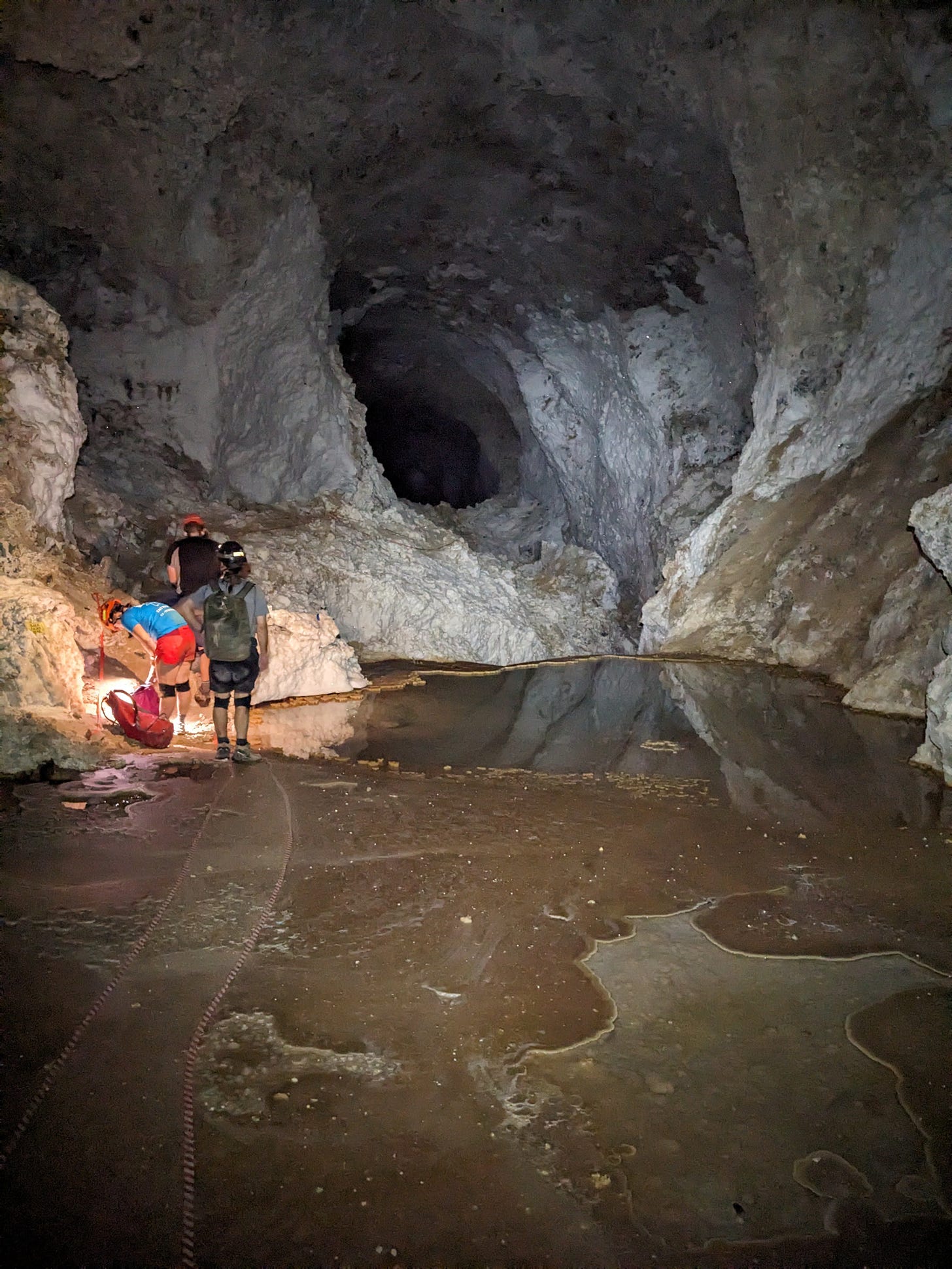
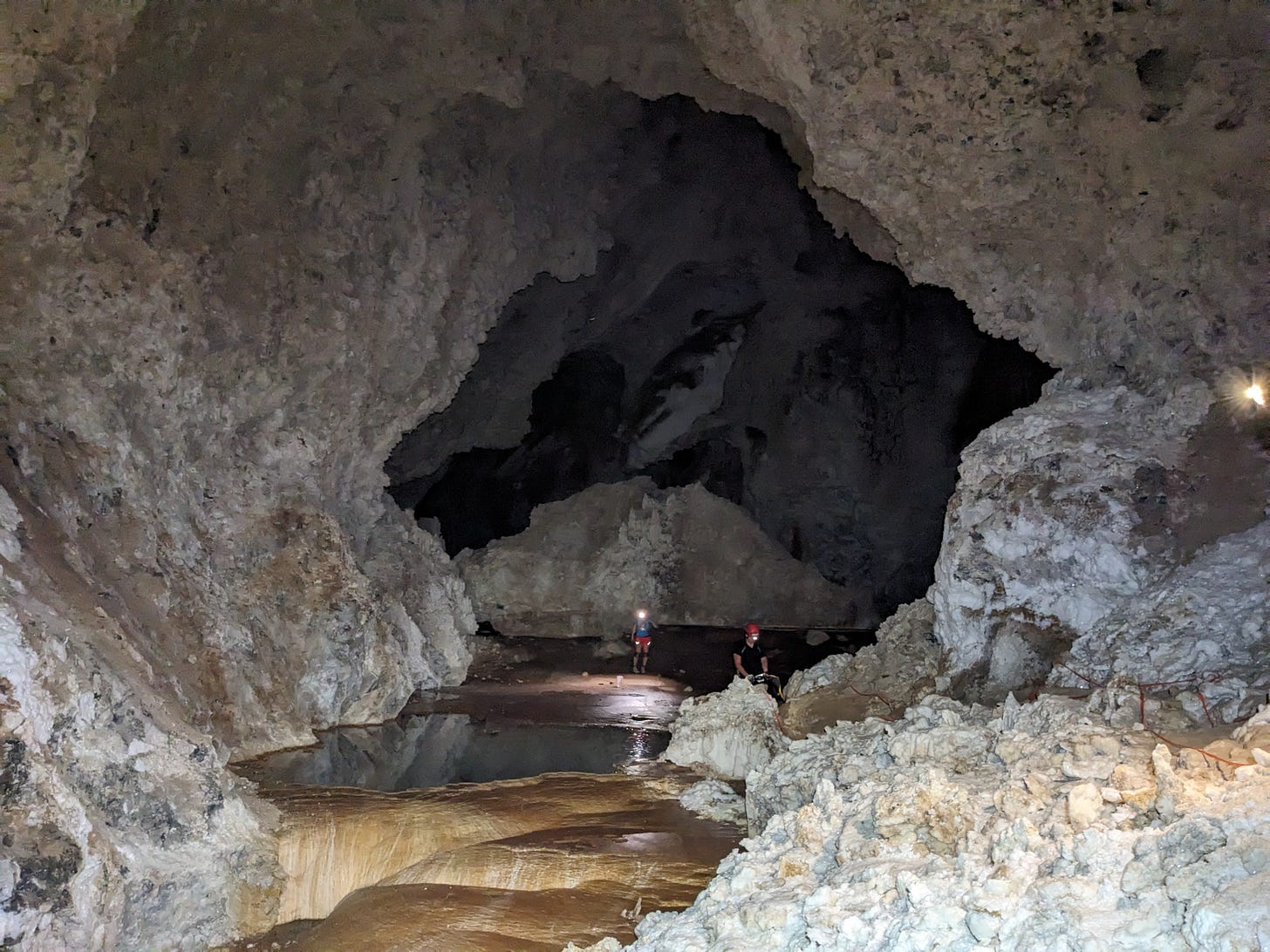
We lost the water and its flowstone slope as we continued into the Lebarge Borehole. We walked along a flagged trail through the breakdown in the floor of the borehole, always wondering what lay beyond the edge of what we could see as it faded into blackness. While looking at the borehole might make you think it would continue forever and ever, it did eventually transition into small tubular passage and begin branching off into small crawly passages going all sorts of directions. This mazey complex of small passages is the Tinsel Town Maze.
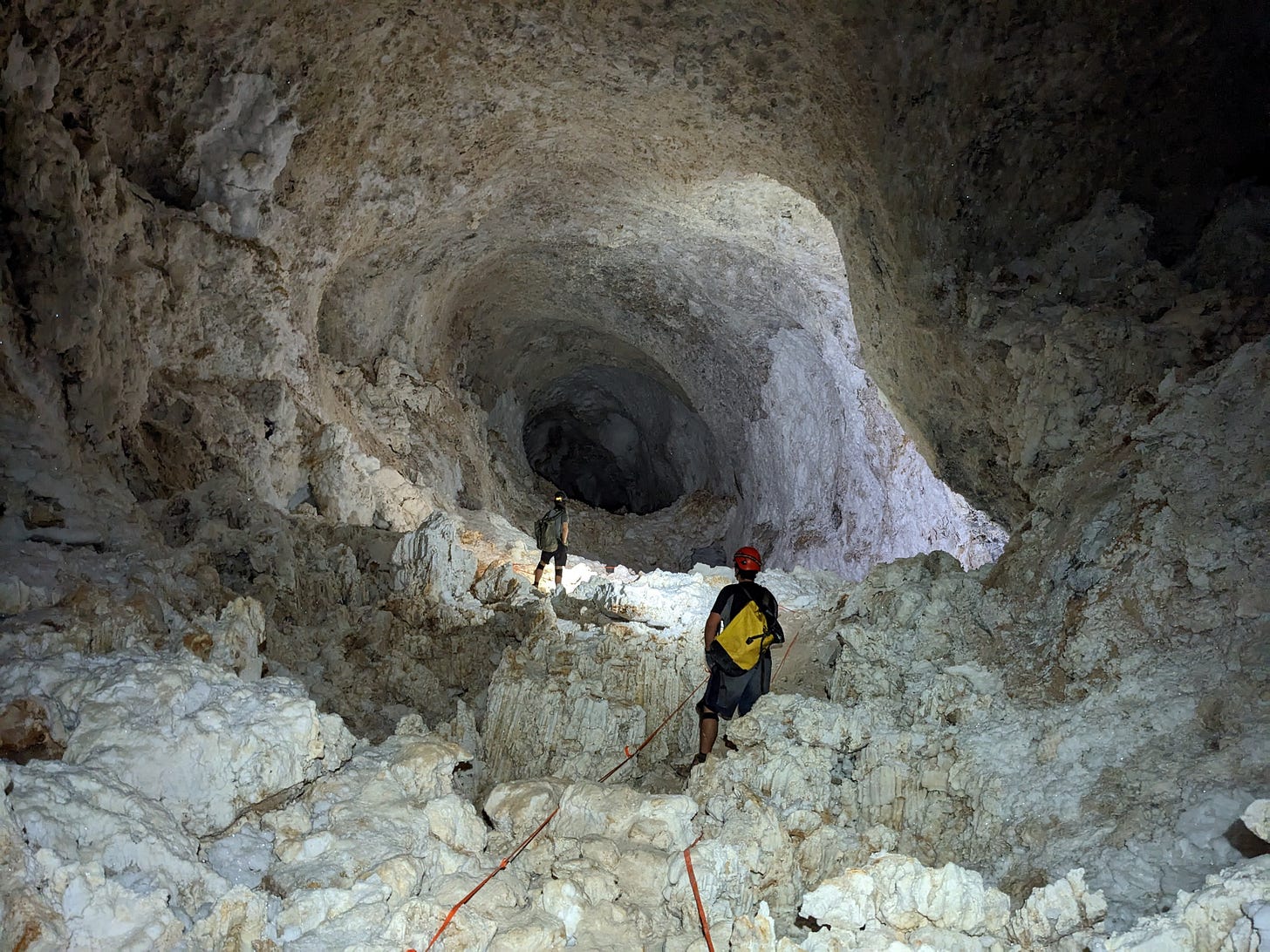
The Tinsel Town maze would be confusing and even downright scary to navigate if there were not one clear flagged path through the whole maze. We followed the path of orange flagging, and eventually the maze turned into large passage again. Where the maze of small crawlways turns back into large passage was an even more wondrous, outrageous, out-of-this-world room in the cave called the Chandelier Ballroom.
The Chandelier Ballroom is named for massive complexes of gypsum crystals growing out of the ceiling, called gypsum chandeliers. The Chandelier Ballroom has the largest gypsum chandelier formations in the world, and they are spectacular not only for their size, but also for their dramatic, jagged structure. They look like growing, branching lightning bolts that froze in place then widened to several feet thick. Some are frosty, like the thick clumps of ice that condense out of the air and freeze onto plants and other structures on a cold winter day. Others are translucent and crystalline. Words do not approach doing justice to these formations, and the pictures only get a little bit closer.
Hunter followed a tradition that someone did the first time he went to the Ballroom. When we all exited the small crawlways of the Tinsel Town Maze and popped up into big passage, he had us turn our lights off and instructed us to only look at the floor. He guided us with an extremely low light so we couldn’t see anything besides what was immediately in front of our feet. He walked us over to the most spectacular part of the room, instructed us to close our eyes, and turned his light on high. We all opened our eyes on the count of three, and feasted our eyes upon one of the most glorious sights to be seen on our beloved planet Earth. Scroll down to get the same effect we did…
.
.
.
.
.
.
.
.
.
.
.
.
.
.
.
.
.
.
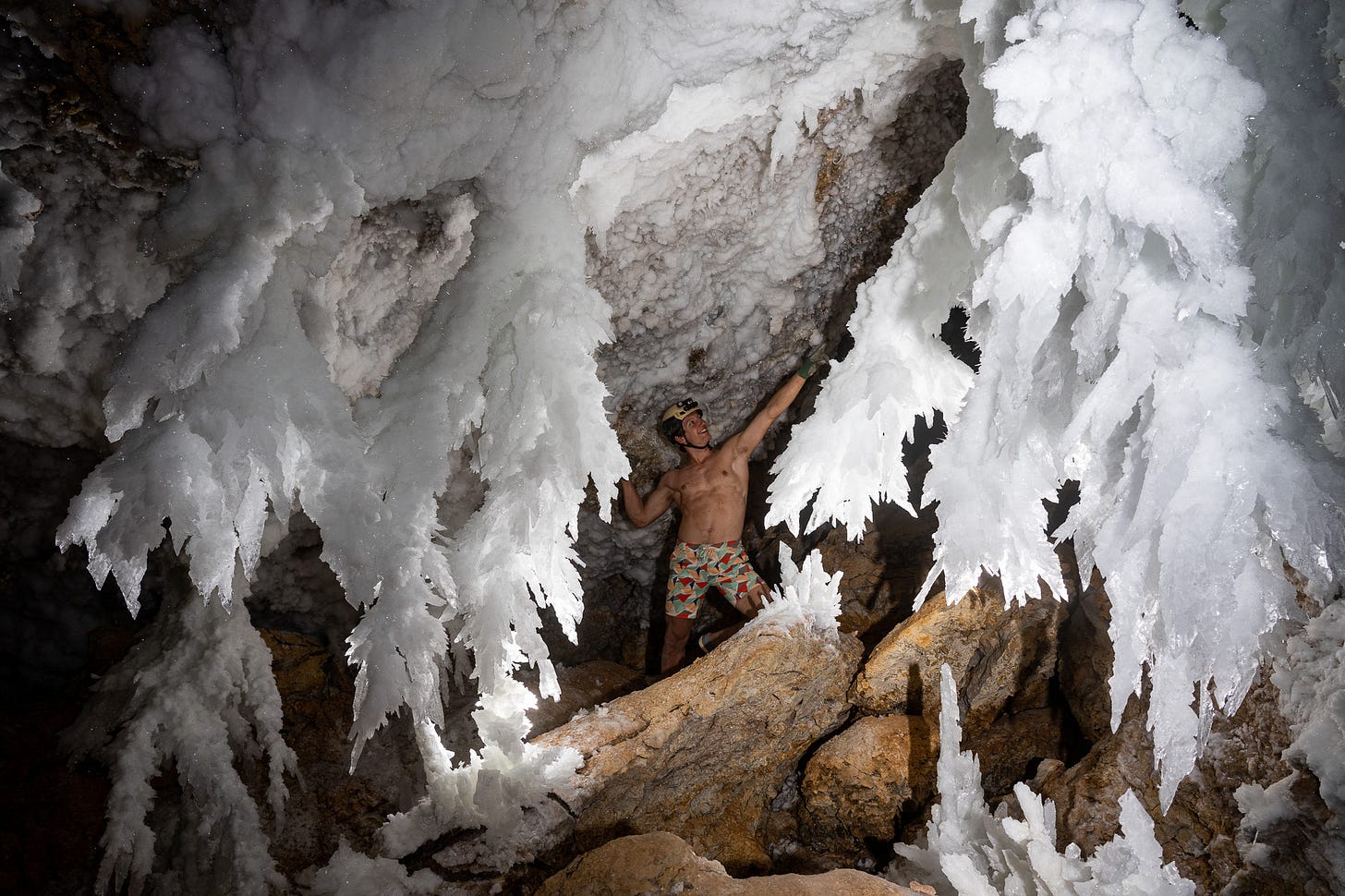
Hunter flagged a trail that weaved through the formations for some upcoming photogrammetry trips. Once we were done with that task, it was time to enjoy the show and take some pictures. Hunter got out his real camera and flashes and got some quality pictures of all of us, seen above.
Besides the chandeliers, there were other incredible gypsum formations in this room. We spotted huge gypsum needles, clusters of gypsum hair, and gypsum flowers. What a great mineral gypsum is!
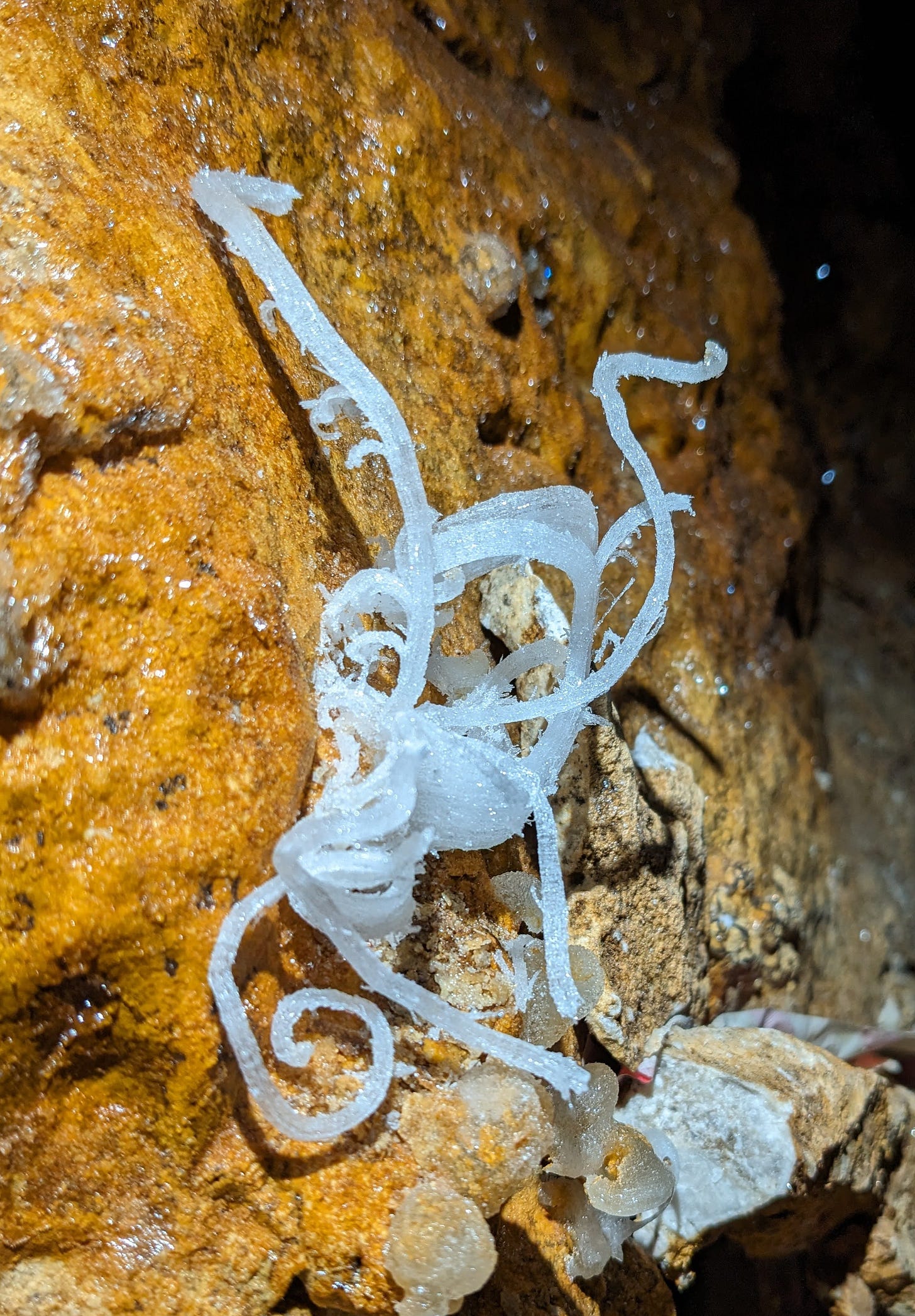
After we got our fix of photos and admiration time in the Chandelier Ballroom, it was time to head out of the cave. We backtracked through the Tinsel Town Maze, through the Lebarge Borehole, and back across Lake Lebarge. We donned our vertical gear and continued up the ropes above Lake Lebarge. We stopped briefly at the top of the Little White Bastard, then continued on and took a more substantial snack break at EF Junction. I volunteered to do the rigging task of replacing that rope in the north rift, the one where I dropped off the replacement rope early on in the trip. I sped through the rift while the others continued their snack break so I could get a head start on the rigging task.
I was to replace the first rope in the North Rift, a traverse line. This rope was tied to a rock projection in horizontal passage right before the rift, and the rope snaked through a crawl before popping out of a hole into the gaping floorless chasm that is the Rift. The situation was slightly complicated by the fact that Hunter tried to replace this rope previously, but had too short a rope, and left the too short rope rigged. So there were three ropes I would have to deal with: the old rope of unknown age and origin that maybe shouldn’t be trusted too much, the new rope which was only attached to anything on one side of the traverse and therefore definitely not to be trusted at all, and the rope I was rigging. After dealing with the awkward crawl that pops you out into a bottomless chasm, I quickly stemmed my way across to the other end of the traverse. There I found a massive boulder the old rope was tied to. I anchored to the same boulder, this time slightly better as I got the rope around the whole boulder with constrictions blocking the rope from moving on either side, instead of just wrapping the rope around the tip of the boulder a few times.
From there, another old rope of unknown age and origin led straight down into the Rift. I checked to see whether the old new rope (the one that wasn’t long enough for the traverse) was long enough to replace this down rope by rigging it to the same boulder and rappelling down the Rift. Even while using some of the leftover rope I had from the traverse rope, I still didn’t reach the bottom of this drop. I hit the backup knot about 30 ft off the ground (“ground”, as the Rift is full of false floors), and looked down to see the old rope continuing downwards to a ledge with a large boulder, where a spider web of three other ropes branched off in different directions. Hunter was mildly stressed to hear about this spider web of other ropes below that rope, as none of these ropes in the North Rift were documented in the park’s rope log the way permanently rigged ropes are supposed to be.
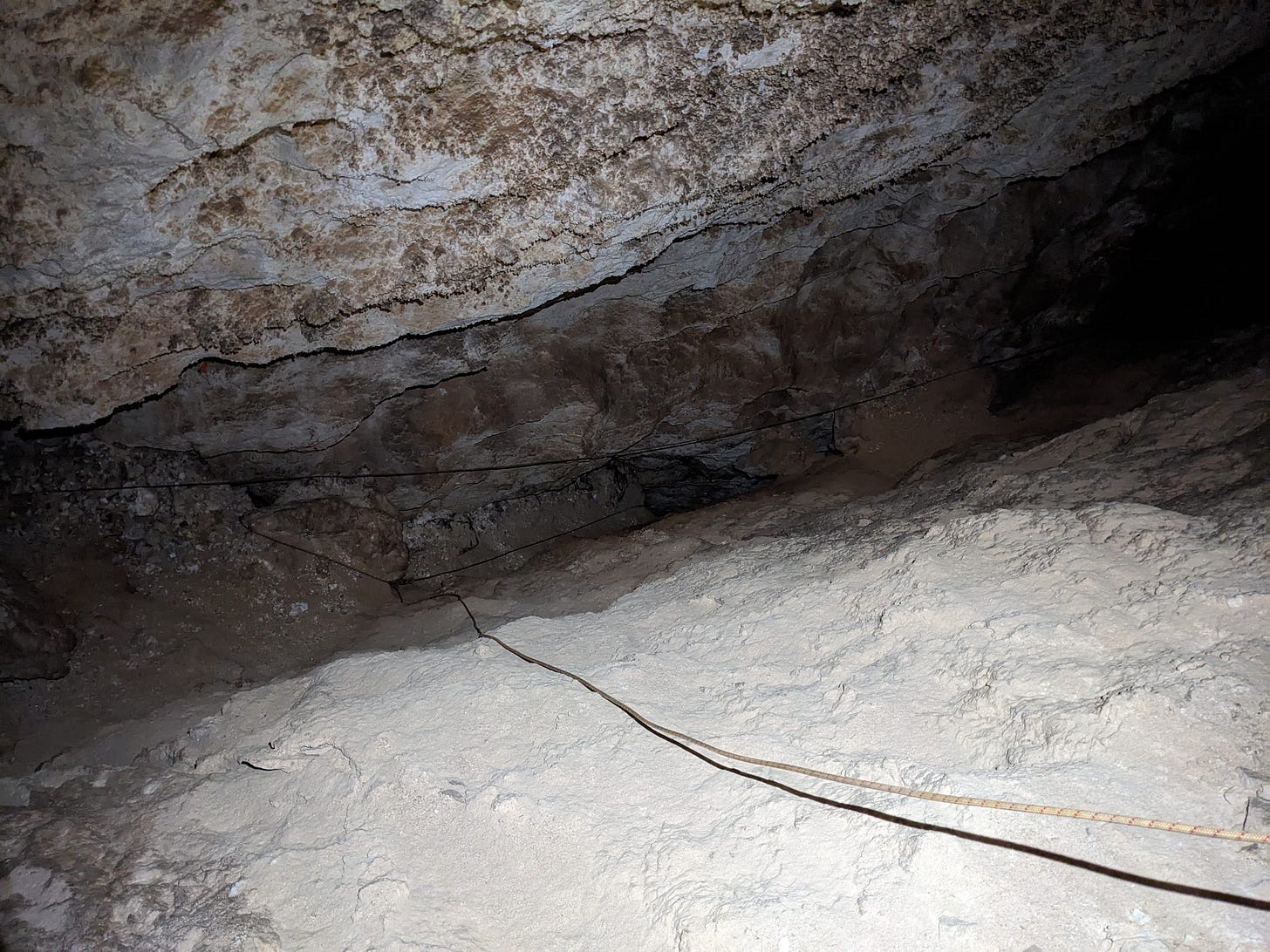
That scene of a spider web of ropes continuing off in unknown directions in a vertical maze was intriguing to me. The North Rift is a very interesting area, and I look forward to doing more rope hauling and replacement trips to learn the area better. Hunter says there are leads in this neglected area. I can’t wait to return and coax more secrets out of this cave!
Although I took a while rigging and derigging the old ropes, I still caught up with the others at the bottom of Boulder Falls, the 150 ft pit that is often a bottleneck for parties leaving the cave. So I’m glad I ditched the others at EF Junction to get a small head start on that task. We all climbed Boulder Falls without incident and made it out of the cave just before 11pm, which made a 12 hour trip.
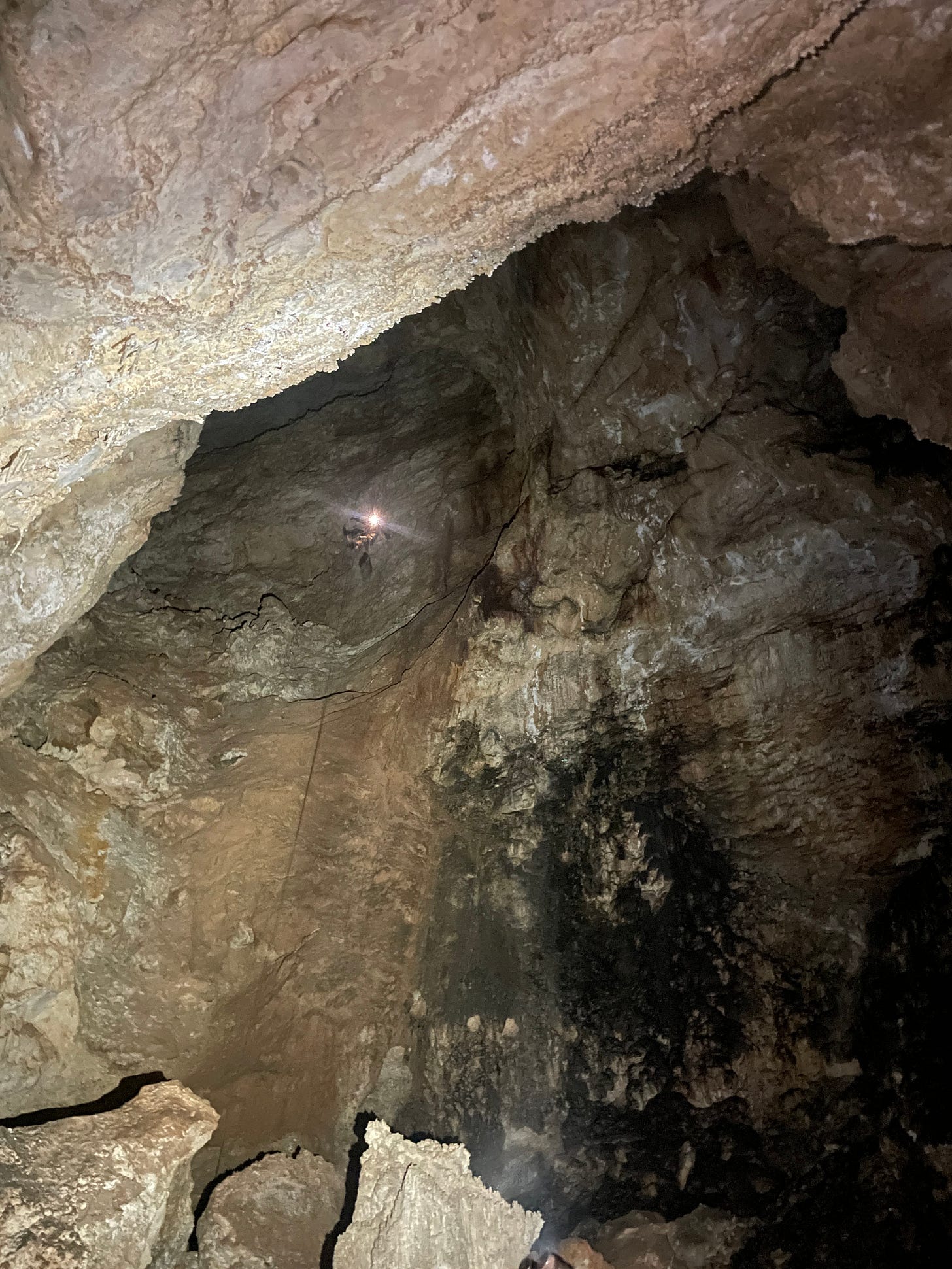
The skies had cleared when we were in the cave, and we were greeted by a brilliant full moon when we got out of the cave. It was the perfect temperature to hike back to the cars.
The next day, Sunday, I got up to another, different kind of cave adventure in the Carlsbad area. Less visually spectacular than this cave, but more off the beaten track and wild. Subscribe to hear about it:
Special thanks to Hunter for organizing this trip, and to Georgia and Clancy for coming and making it tons of fun.


